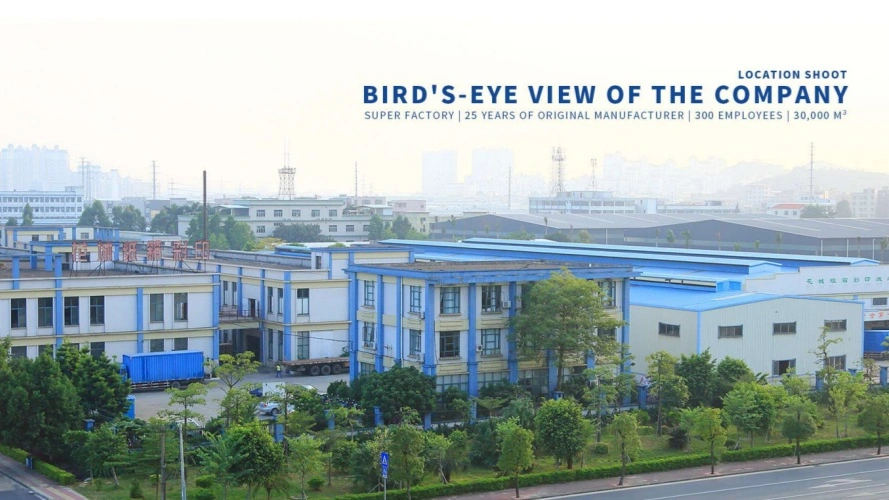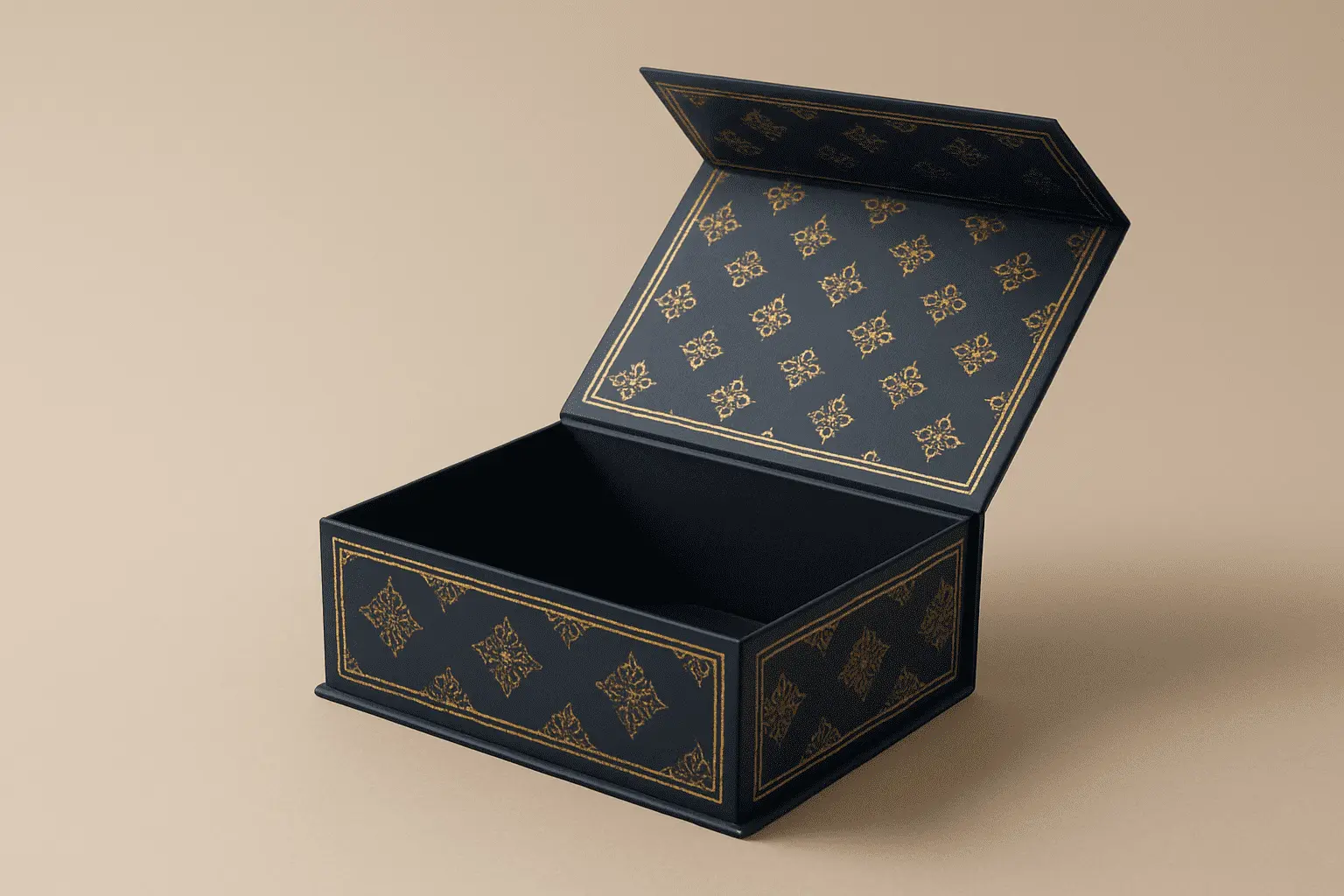10 Small Business Packaging Ideas to Elevate Your Brand
In today's competitive marketplace, packaging serves as your brand's first physical touchpoint with customers, making it a critical component of your marketing strategy. Smart packaging design can transform your product box from a simple container into a powerful brand ambassador that communicates quality, values, and professionalism. Whether you're launching a startup or scaling an established business, the right packaging approach can significantly impact customer perception, unboxing experience, and ultimately, your bottom line. This comprehensive guide explores ten innovative packaging ideas that will help your small business stand out on crowded shelves and create lasting impressions with your target audience.

Custom Color Schemes That Reflect Your Brand Identity
Creating a distinctive color palette for your product box is one of the most effective ways to establish brand recognition and emotional connection with customers. Color psychology plays a crucial role in consumer behavior, with studies showing that up to 90% of snap judgments about products are based on color alone. When designing your packaging, consider how different colors align with your brand personality and target audience expectations. For luxury brands, deep blues, blacks, and metallics convey sophistication, while eco-friendly companies often gravitate toward earth tones and greens. The key is consistency across all packaging elements, from the primary product box to secondary packaging materials. Modern printing technology allows for precise color matching and reproduction, ensuring your brand colors remain consistent across different production runs. Advanced printing processes such as UV coating and cold foil stamping can enhance color vibrancy while adding protective qualities to your packaging. When selecting paperboard materials, options ranging from 250g to 400g provide different levels of durability and feel, allowing you to match the packaging quality to your product's positioning. FSC certified materials ensure environmental responsibility while maintaining professional appearance standards.
Sustainable Packaging Solutions That Appeal to Eco-Conscious Consumers
Environmental consciousness has become a significant purchasing factor, with over 60% of consumers willing to pay more for sustainable packaging options. Incorporating eco-friendly materials and practices into your product box design demonstrates corporate responsibility while appealing to environmentally aware customers. Recyclable corrugated materials, biodegradable inks, and minimal packaging designs reduce environmental impact without compromising protection or aesthetic appeal. FSC certified paperboard ensures responsible forest management while maintaining the structural integrity needed for shipping and display. Sustainable packaging extends beyond material selection to include design efficiency and end-of-life considerations. Optimizing package dimensions reduces shipping costs and carbon footprint while maintaining product protection. Clear recycling instructions and symbols help customers properly dispose of packaging materials, reinforcing your brand's environmental commitment. Consider incorporating seed paper elements or plantable packaging components that transform waste into something beneficial. These innovative approaches not only reduce environmental impact but also create memorable unboxing experiences that customers are likely to share on social media, extending your brand's reach organically.
Premium Finishing Techniques for Luxury Appeal
Elevating your product box with premium finishing techniques creates a tactile experience that communicates quality and attention to detail. Hot foil stamping adds metallic accents that catch light and create visual interest, while embossing provides textural elements that invite touch. UV coating creates a glossy, protective finish that enhances color vibrancy and provides moisture resistance. Frosted touch finishes offer a sophisticated matte feel that suggests premium quality while providing excellent printability for detailed graphics and text. These finishing techniques work particularly well when combined strategically rather than used excessively. A subtle embossed logo paired with selective UV coating on key design elements creates visual hierarchy and brand recognition without overwhelming the overall design. Cold foil stamping offers cost-effective metallic effects for larger production runs while maintaining precise detail reproduction. The combination of different paperboard weights and finishing techniques allows for customization that matches your brand positioning and budget requirements while creating a memorable unboxing experience that customers associate with quality and professionalism.
Interactive Packaging Elements That Engage Customers
Modern consumers expect more than basic product protection from packaging – they seek engaging experiences that create emotional connections with brands. Interactive elements in your product box design can transform the unboxing process into a memorable brand touchpoint. QR codes linking to exclusive content, augmented reality experiences, or personalized messages create digital engagement opportunities while maintaining physical packaging appeal. Hidden messages revealed through special coatings or temperature-sensitive inks add surprise elements that encourage social sharing and word-of-mouth marketing. Structural design innovations such as magnetic closures, pull-tabs, or origami-inspired folding patterns make opening the package part of the product experience. These elements require careful consideration of production costs and complexity, but the investment often pays dividends through increased customer satisfaction and brand loyalty. Custom die-cut windows, perforated sections, or modular packaging components that customers can repurpose extend the packaging's life beyond its initial function. When implementing interactive elements, ensure they align with your target audience's preferences and technical comfort levels while maintaining the primary function of product protection and brand communication.
Minimalist Design Approaches That Maximize Impact
The minimalist design philosophy of "less is more" has gained significant traction in packaging design, particularly among brands targeting sophisticated, design-conscious consumers. Clean lines, strategic white space, and carefully selected typography create product box designs that stand out through simplicity rather than complexity. This approach requires discipline in design decisions, focusing on essential brand elements while eliminating unnecessary decorative features. The result is packaging that communicates confidence, quality, and modernity while allowing the product itself to be the hero. Minimalist packaging often relies heavily on premium materials and finishing techniques to create impact through subtlety. High-quality paperboard with precise cutting and folding creates crisp edges and professional appearance. Single-color printing with strategic use of embossing or debossing adds texture without visual clutter. Typography becomes crucial in minimalist designs, requiring careful selection of fonts that align with brand personality while maintaining readability across different sizes and applications. The minimalist approach also supports sustainability goals by reducing ink usage and simplifying recycling processes, appealing to environmentally conscious consumers who appreciate both aesthetic restraint and environmental responsibility.
Multi-Functional Packaging That Adds Value
Creating product box designs that serve multiple purposes extends the packaging's value proposition beyond mere product protection. Storage containers, gift boxes that double as decorative items, or packaging that transforms into display stands provide ongoing utility that keeps your brand visible in customers' homes or offices. This approach requires careful consideration of structural engineering and material selection to ensure durability for extended use while maintaining cost-effectiveness for initial production. Multi-functional packaging design involves understanding customer behavior and identifying opportunities where packaging can solve additional problems or meet secondary needs. Cosmetic brands often create packaging that functions as vanity organization, while food companies design containers suitable for pantry storage. The key is ensuring the secondary function doesn't compromise the primary purpose of product protection and brand communication. Clear instructions or subtle design cues help customers understand the packaging's additional capabilities without creating confusion about its primary purpose. This strategy builds customer loyalty through practical value while differentiating your brand from competitors who treat packaging as disposable.
Seasonal and Limited Edition Packaging Strategies
Seasonal packaging variations create urgency and collectibility while allowing brands to stay relevant throughout the year. Holiday-themed designs, seasonal color schemes, or limited edition artwork can drive repeat purchases and gift-giving occasions. Your product box becomes a canvas for storytelling that connects with customers' emotional associations with different times of year. This strategy requires careful planning and inventory management but can significantly boost sales during key retail periods. Limited edition packaging creates scarcity and exclusivity that appeals to collectors and brand enthusiasts. Special collaborations with artists, cause-related designs, or anniversary editions generate buzz and social media engagement. The production process for seasonal and limited editions requires flexibility in printing and finishing capabilities, making it important to work with suppliers who can accommodate smaller runs and quick turnarounds. Digital printing technology makes short-run customization more cost-effective, enabling smaller businesses to compete with larger brands in creating special packaging experiences. Success with seasonal packaging requires understanding your customer base's preferences and shopping patterns while maintaining brand consistency across all variations.
Personalization and Customization Options
Personalized packaging creates individual connections between brands and customers, transforming mass-produced items into seemingly bespoke experiences. Variable data printing technology enables cost-effective personalization, allowing names, messages, or custom graphics on each product box without significant cost increases. This approach works particularly well for gift items, subscription boxes, or direct-to-consumer brands where customer data enables meaningful personalization. Customization options can range from simple name printing to complex design variations based on customer preferences or purchase history. The key is implementing systems that capture and utilize customer data effectively while maintaining production efficiency. Modular packaging designs allow for mix-and-match components that create unique combinations without requiring completely custom production runs. Digital printing capabilities and automated finishing equipment make personalization scalable for growing businesses. When implementing personalization strategies, consider privacy concerns and ensure customer data usage aligns with stated policies while creating genuine value for the customer experience.
Smart Packaging Technology Integration
The integration of smart technology into packaging design represents the future of brand-customer interaction, offering opportunities for enhanced engagement, product authentication, and supply chain transparency. NFC chips, RFID tags, or QR codes embedded in your product box can provide access to product information, authenticity verification, or exclusive digital content. These technologies create bridges between physical products and digital experiences while providing valuable data about customer behavior and preferences. Smart packaging implementation requires balancing technology costs with added value for customers and brands. Simple QR codes linking to instructional videos, warranty registration, or customer service portals provide immediate utility without significant cost increases. More advanced applications might include temperature indicators for sensitive products, freshness sensors for food items, or GPS tracking for high-value goods. The technology should enhance rather than complicate the customer experience, providing clear benefits that justify any additional complexity. As technology costs decrease and consumer acceptance increases, smart packaging features will become standard expectations rather than premium add-ons.
Brand Storytelling Through Packaging Design
Your product box serves as a storytelling medium that can communicate brand values, heritage, and mission in ways that resonate emotionally with customers. Effective storytelling through packaging requires understanding your brand narrative and translating it into visual and tactile elements that customers can experience directly. This might involve highlighting sustainable practices, showcasing artisanal production methods, or celebrating company milestones through design elements that create emotional connections. Visual storytelling through packaging involves carefully selected imagery, typography, and color palettes that support your brand narrative. Historical references, cultural elements, or personal founder stories can be woven into design elements that create depth and authenticity. The inside of packaging provides additional storytelling opportunities through hidden messages, brand timelines, or customer testimonials that reward careful examination. Successful brand storytelling through packaging requires consistency across all touchpoints while allowing for creative expression that differentiates your brand from competitors. The story should be authentic and relevant to your target audience while supporting broader marketing and brand positioning strategies.
Conclusion
Effective packaging design represents one of the most powerful tools available to small businesses for building brand recognition, customer loyalty, and competitive advantage. The ten strategies outlined above demonstrate how thoughtful approach to product box design can transform a simple container into a comprehensive brand experience that drives sales and builds lasting customer relationships. From sustainable materials and premium finishing techniques to smart technology integration and personalized experiences, modern packaging offers unprecedented opportunities for small businesses to compete effectively with larger competitors while expressing unique brand personalities.
Ready to elevate your brand with professional packaging solutions? Guangzhou Fetching Color Printing & Packaging Ltd. brings over 20 years of experience and 300+ skilled employees to help transform your packaging vision into reality. Our 35,000 m² facility houses industry-leading equipment and serves over 1,000 loyal customers across diverse industries. From custom color boxes and premium finishing techniques to sustainable materials and innovative design solutions, our team of experienced packaging engineers provides comprehensive support from concept to delivery. With MOQ of just 1000 pieces, 15-20 day turnaround times, and free 3D mock-ups, we make professional packaging accessible for businesses of all sizes. Contact us today at public@fetchingprinting.com to discover how our expertise can help your brand stand out in today's competitive marketplace.
References
1. Johnson, M.K. & Stevens, R.L. (2023). "Consumer Psychology in Packaging Design: The Impact of Visual Elements on Purchase Decisions." Journal of Marketing Research and Consumer Behavior, 15(3), 45-62.
2. Thompson, A.R., Williams, C.J. & Davis, P.M. (2024). "Sustainable Packaging Solutions for Small Business: A Comprehensive Analysis of Market Trends and Consumer Preferences." International Journal of Business and Environmental Studies, 8(2), 112-128.
3. Rodriguez, L.A. & Kumar, S.B. (2023). "The Role of Premium Finishing Techniques in Brand Perception: An Empirical Study of Consumer Responses to Tactile Packaging Elements." Packaging Technology and Innovation Review, 12(4), 78-94.
4. Mitchell, J.D., Chang, K.W. & Brown, T.S. (2024). "Digital Integration in Modern Packaging: Smart Technology Applications and Consumer Adoption Patterns." Technology and Business Innovation Quarterly, 7(1), 23-39.

Based on your location and order quantity, you will have the opportunity to receive a limited time free shipping promotion!

Corporate Purpose
